Generosity to integrative health program benefits mind, body and spirit
Gift from Jim and Christina Grote propels education and innovation at Ohio State’s Center for Integrative Health.
Most would undoubtedly say the absence of disease is a key aspect of a healthy body. And it is. But what about wellness? What about the mind and spirit?
Over the last few decades, interest in attaining a state of well-being that incorporates the mind, body and spirit has grown rapidly in the United States. So has the demand for and use of a holistic approach to health and wellness called integrative medicine or integrative health.
The approach combines conventional and complementary medicine to care for the whole person. Techniques include mindfulness, meditation, acupuncture, ayurveda and yoga. All of these and more are offered and taught at the Center for Integrative Health at The Ohio State University Wexner Medical Center.
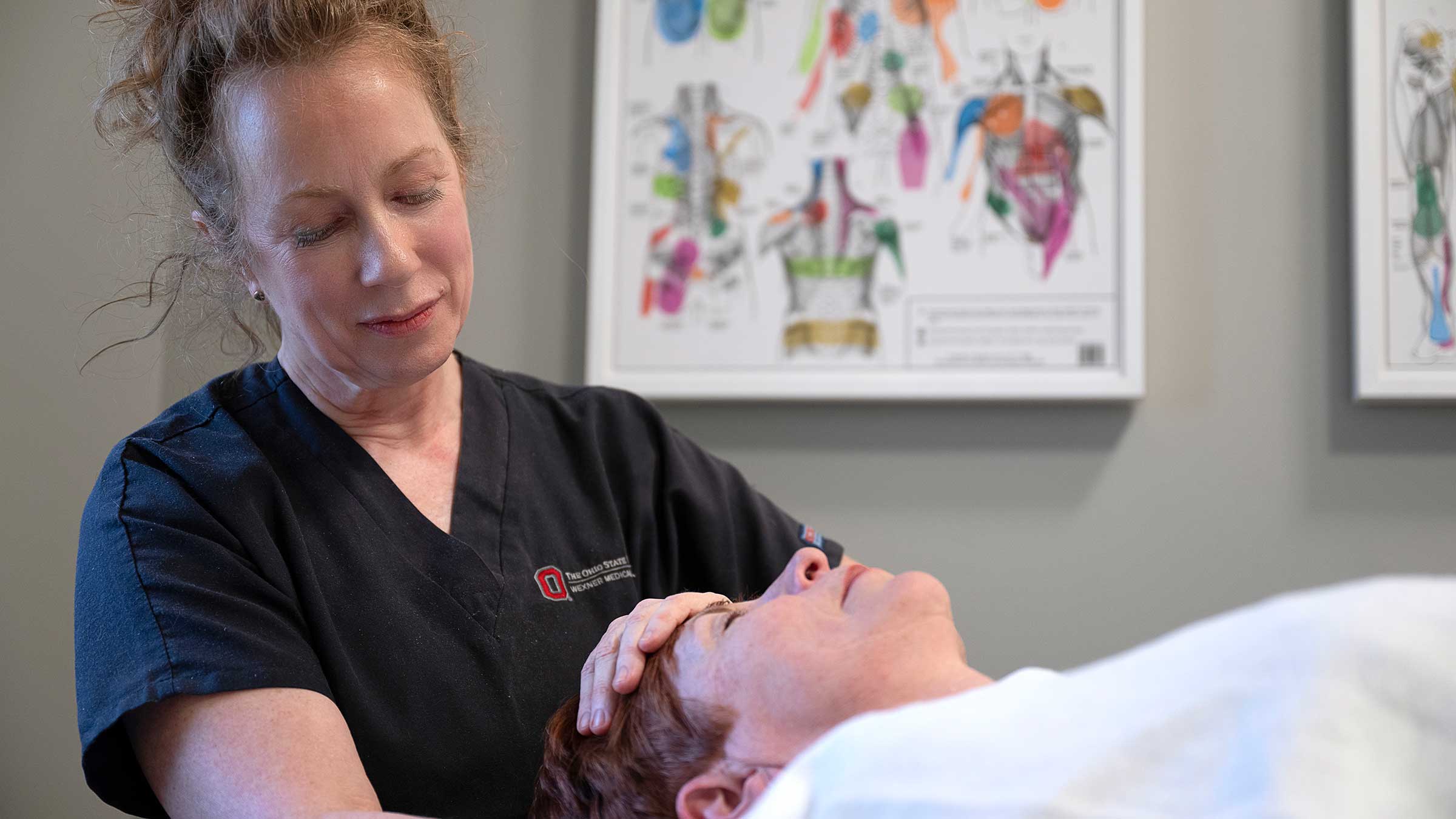
The center’s evidence-based programs, classes and services optimize the mind-body-spirit connection. Patients come to the center seeking help for the same conditions they might see a traditional medical provider for: chronic pain, illness, fatigue or simply the desire to be healthier. Students and faculty turn to the center to learn integrative health techniques through various educational opportunities, including an undergraduate minor and a fellowship program.
“The Center for Integrative Health has been a hidden gem for years,” says Maryanna Klatt, PhD, the center’s director. She would know — she played a key role in initial conversations to form the center and its opening in 2005.
“I want it to stop being a hidden gem,” Dr. Klatt says.
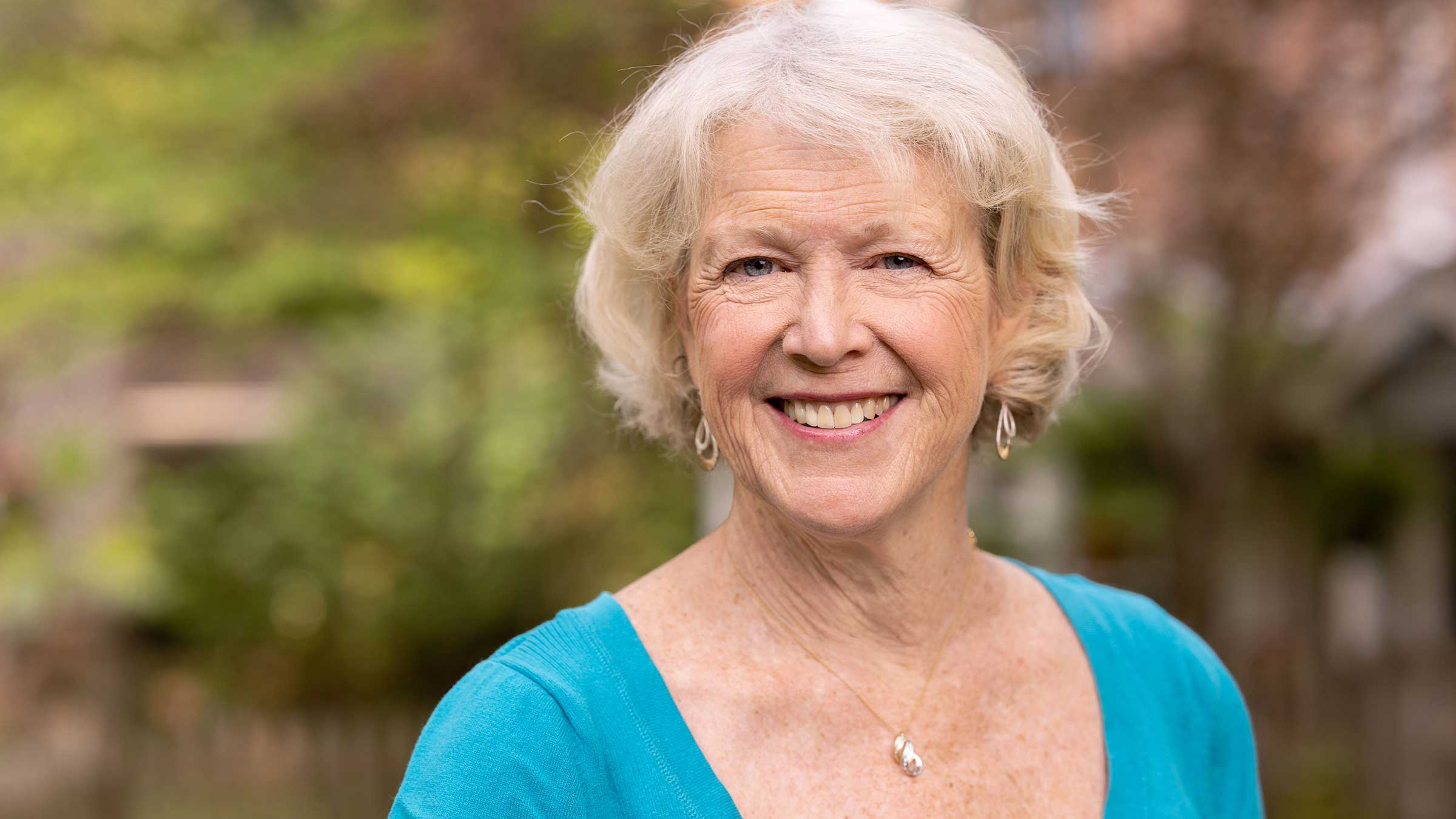
The right people meet the growing demand for integrative health
Dr. Klatt believes the Center for Integrative Health is at a pivotal moment in its evolution.
“Demand for whole-person care is growing. We have the people power and the science power. And our students and faculty want to incorporate integrative health into their education and practice,” Dr. Klatt says.
At this moment of maximum potential, “philanthropy is the one thing that can take us to the next level of research, education and care,” Dr. Klatt says.
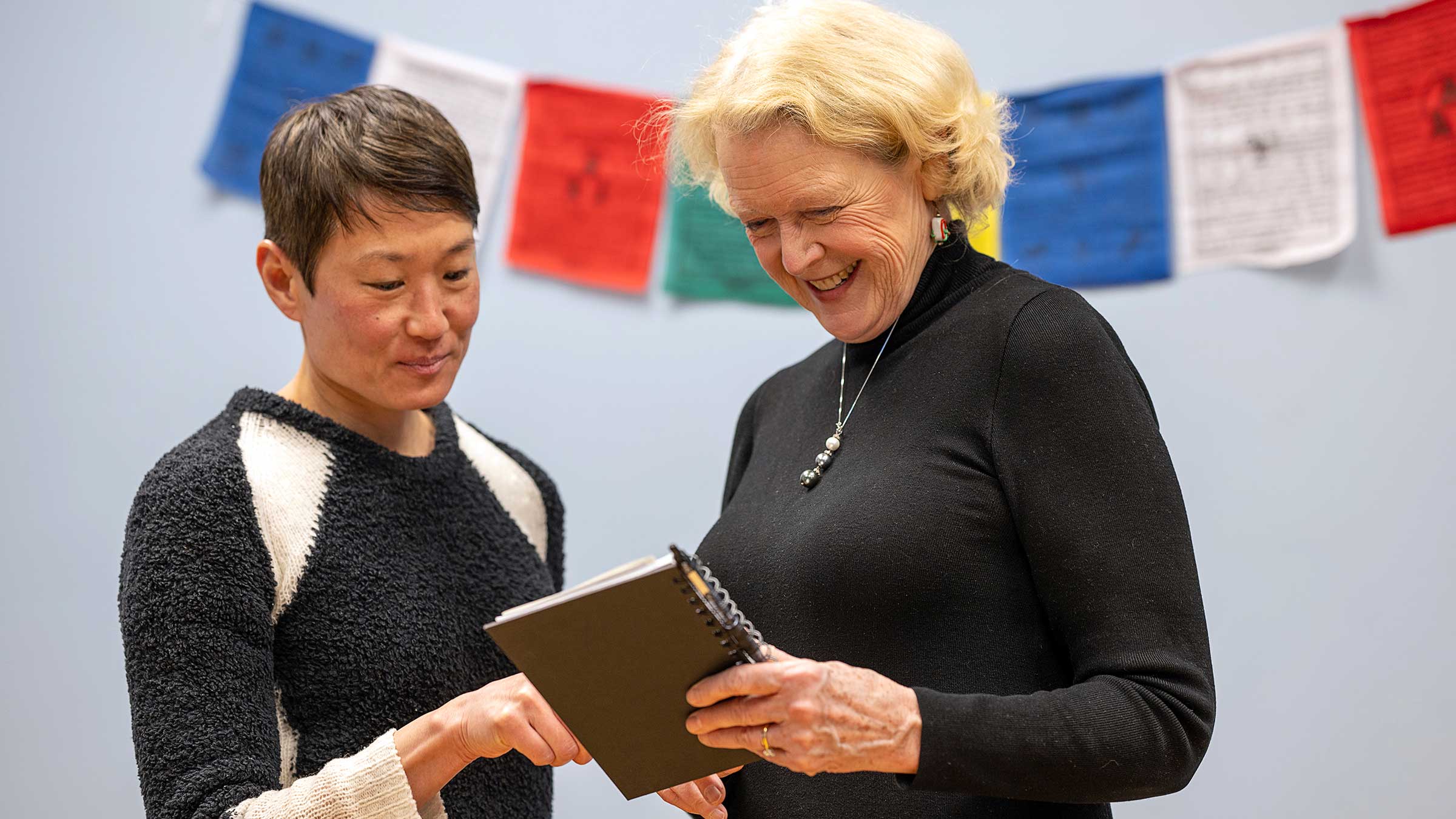
Enter Jim and Christina Grote.
The couple recently committed $10 million to support the Center for Integrative Health at Ohio State.
“This generous gift will not only help elevate Ohio State’s integrative health program, but it will also help position us as a national leader in providing proactive, preventive health care delivery and research,” says John J. Warner, MD, chief executive officer of The Ohio State University Wexner Medical Center and executive vice president at Ohio State.
“Support from champions like the Grotes enables us to provide world-class care for every person, every time — and to ultimately help improve the health and well-being of all Ohioans,” Dr. Warner says.
The Grotes have been practicing and benefiting from integrative health techniques for many years.
“I have been studying and working in the field of natural, or complementary, healing practices most of my life, from massage therapy and acupressure to the use of sound, color and music,” says Christina, who co-authored Living an Extraordinary Life: The Magic of Integral Transformative Practice, a book about realizing one’s full potential.
Christina says taking care of our mind, body and spirit can help prevent and treat illness.
“We are multidimensional beings. Each part of us needs its own kind of care and development. You can’t leave anything out,” Christina Grote says.A recent bout with breast cancer showed her the need for an integrative approach to cancer care and has made her more determined than ever to bring the benefits of this approach to others.
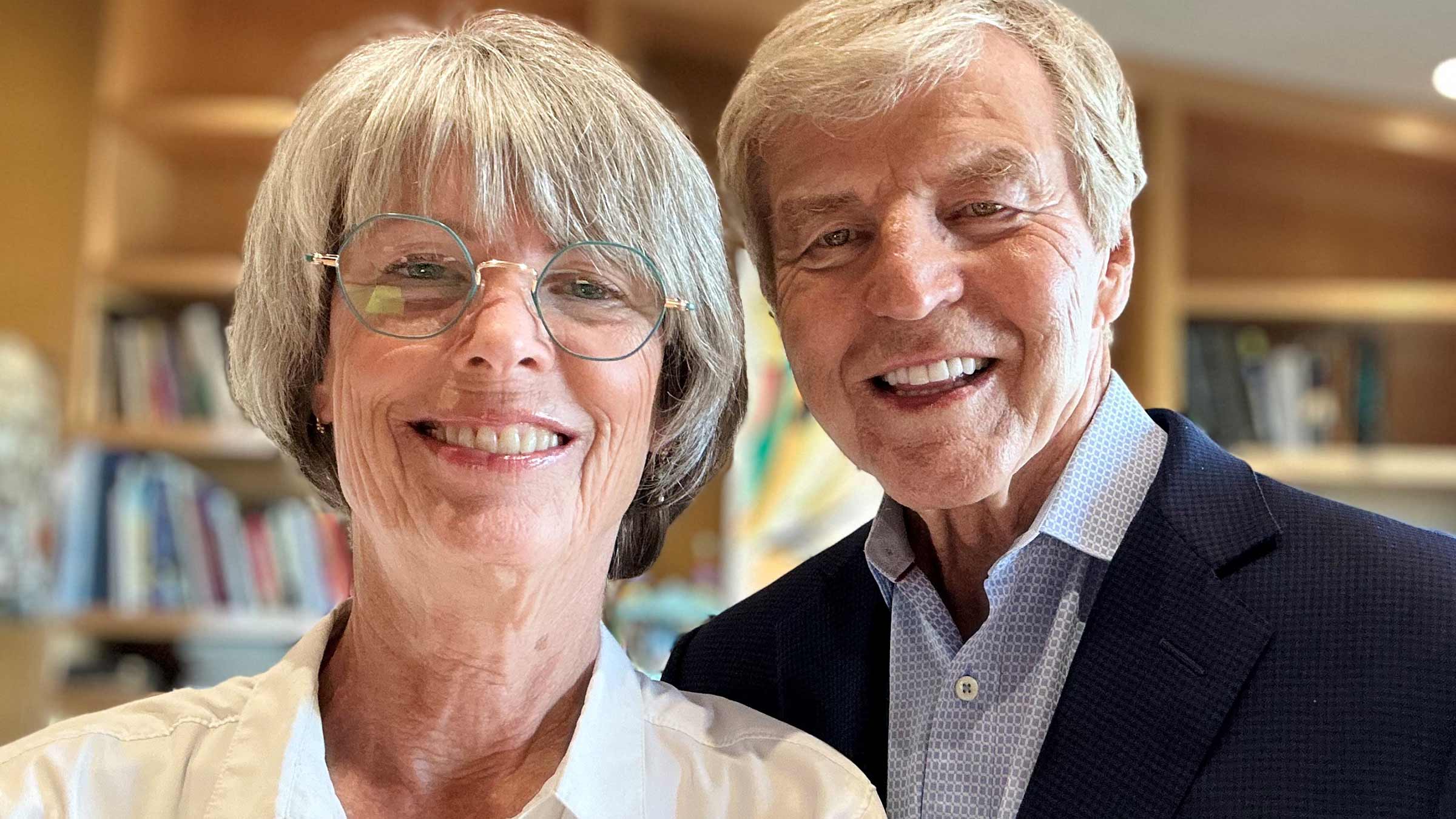
Jim’s interest in health and longevity has been lifelong.
“Not treating the whole person can pull you into a really unhealthy situation,” he says, adding half-jokingly, “the idea was never to have to go to the doctor.”
Jim has used various therapies including massage, reflexology, acupuncture, herbal remedies and osteopathic treatments. For him, balancing mind, body and soul is both valuable and necessary.
“Being in the food business, I have a strong interest in nutrition and food as medicine,” he says.
He was a sophomore at Ohio State in 1963 when he bought a Columbus pizza shop called Donatos, Latin for “donate,” which now has franchises in 28 states. He says he’s excited to see a university of Ohio State’s caliber bringing together conventional and complementary medicine and serving as a model for other institutions nationwide and around the world.
Like Dr. Klatt, the Grotes feel now is the time to act.
“The efficacies of conventional medicine brought together with practices that promote balance and healing is the way of the future,” Christina says.
Multifaceted impact on integrative health
The Grotes’ transformational gift will establish an endowed chair and professorship in integrative health to recruit and retain top talent, as well as an innovation fund to boost research and discoveries.
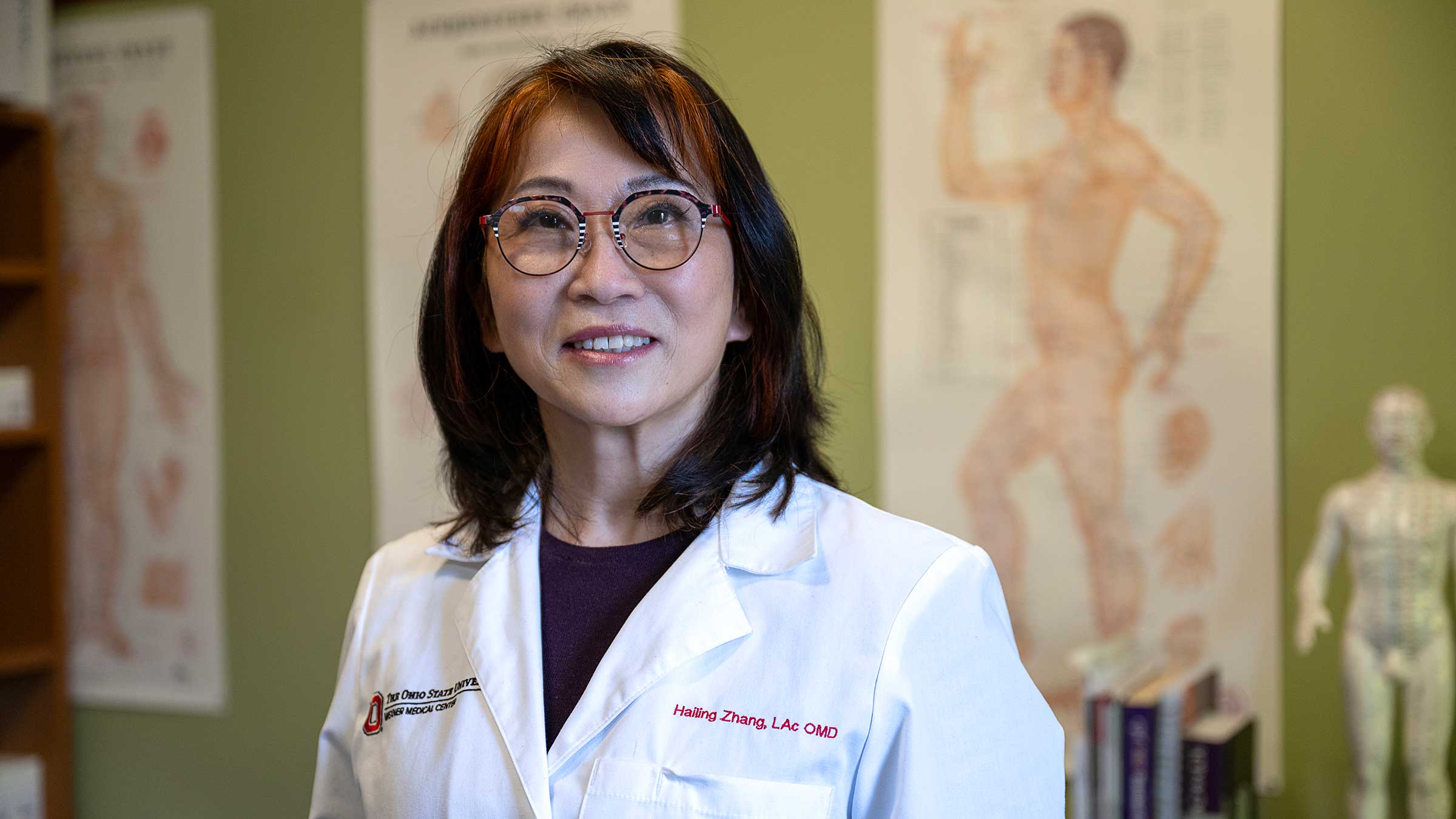
“The endowed positions will recognize and advance the valuable work of our exceptional faculty. Our research efforts will be enhanced even further by the innovation fund. I am so grateful for their support,” says Carol R. Bradford, MD, MS, dean of the Ohio State College of Medicine, the Leslie H. and Abigail S. Wexner Dean’s Chair in Medicine and vice president for Health Sciences of the Wexner Medical Center.
Dr. Klatt says the Grotes’ gift ensures the center’s sustainability “for forever.” From programming for underserved communities to additional faculty and practitioners to new service lines, the initiatives funded by their exceptional commitment will expand access to the proven life-changing power of integrative health practices and therapies.
A key area of impact will be educating future health care professionals. The chair and professorship funds will support protected time to expand education in the science behind integrative techniques. The Grotes and Dr. Klatt believe education is the way to initiate change in the way patient care is delivered.
The innovation fund will allow the center to incubate new research ideas. Over the last few decades, research has provided undeniable evidence that the whole-person approach works.
“There’s so much science now that wasn’t there 30 years ago, facilitated by the functional MRI and changes in biomarkers that show the impact of mind-body interventions,” Dr. Klatt says.
“When I started this, everybody thought, ‘this approach to health is so fringe.’ Scientific research in this discipline has moved us beyond that sentiment,” Dr. Klatt says.
She says more research is crucial to advancing the field and the center is now ready to do it.
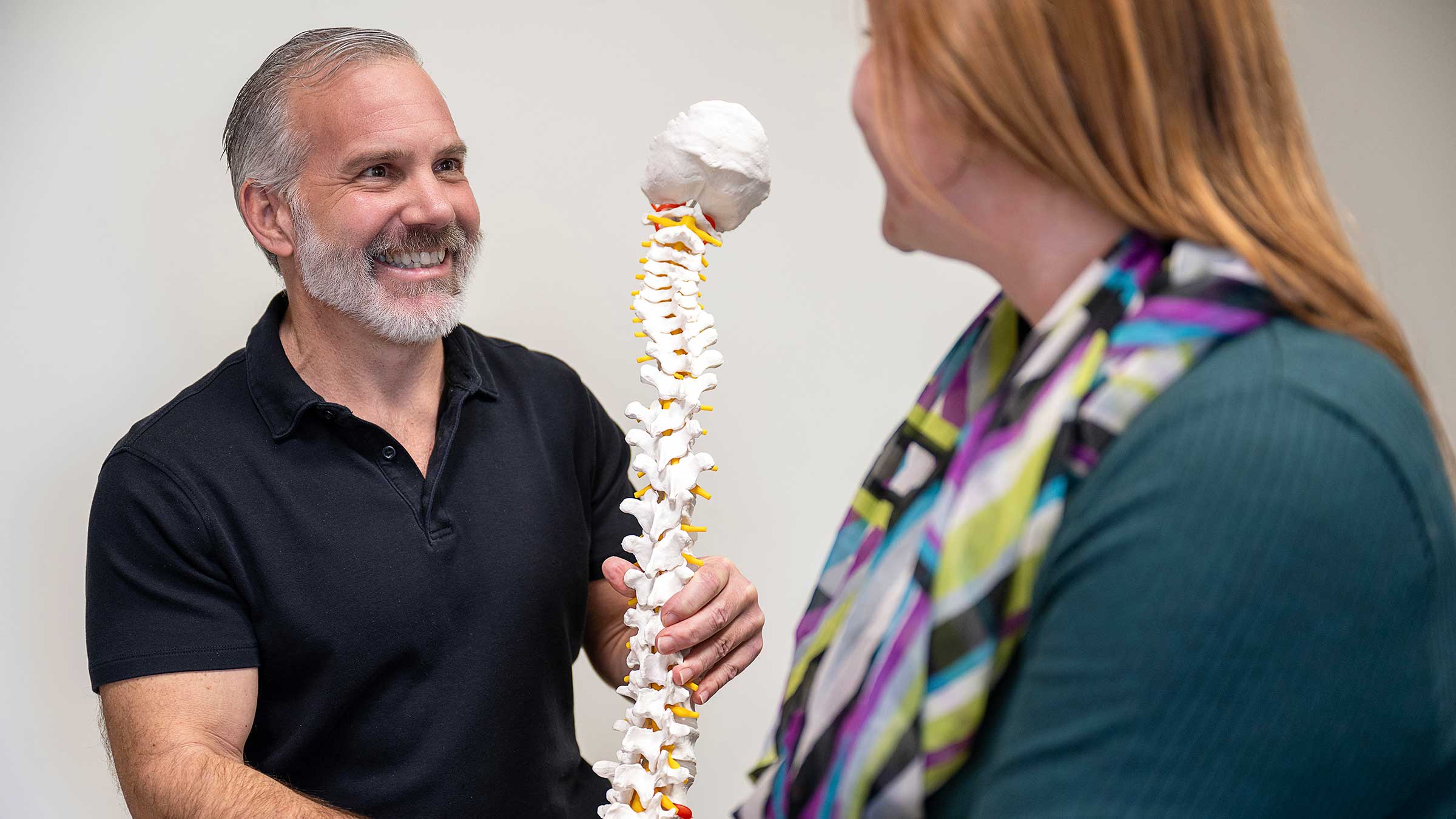
The bright future of mind-body-spirit wellness at Ohio State
Dr. Klatt says everybody played a part in the center’s growth over the last 20 years, because science and academia are team sports.
“Patients need, want and demand more,” Dr. Klatt says.
“They want to be seen, heard and treated as more than the sum of their parts. They want to prevent disease, but they also want balance and fulfillment. They want fewer medications and better outcomes.”
According to the Grotes, an integrative health approach can provide the personalized care every individual deserves.
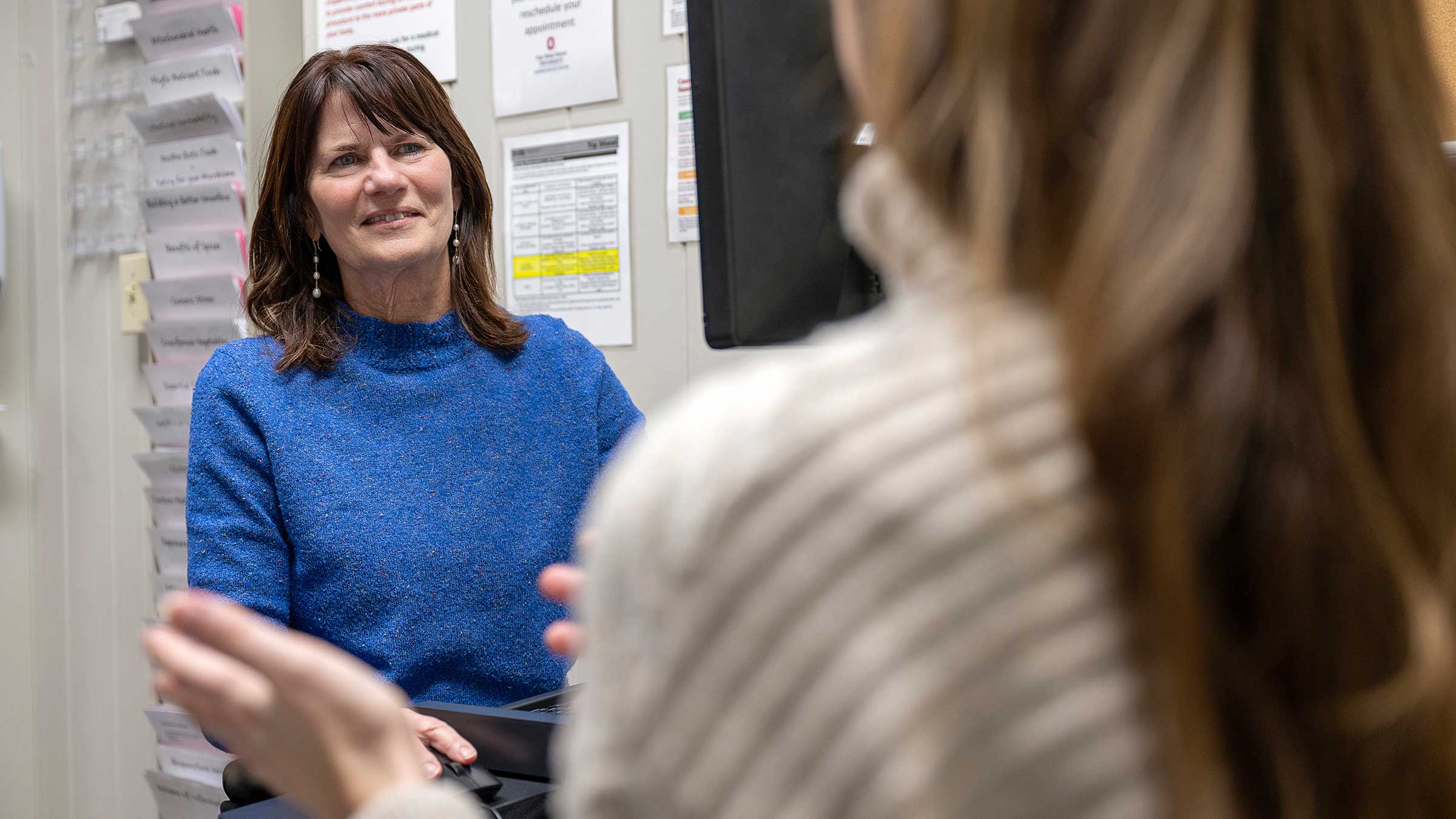
To expand access, Dr. Klatt says the Center for Integrative Health will start offering services and classes using a hub-and-spoke model. In April, the center will move its “hub” to the new Bob Crane Community Center in Upper Arlington. Current “spokes” include outpatient care locations in Dublin and Westerville. Soon, two locations will be added: first in Hilliard and then in Powell.
The Grotes hope this is the beginning of a systemic change in health care.
“Our hope is that our gift will encourage other donors to join in this enterprise of transforming health care, so people are supported throughout their healing journey with compassionate whole-person care,” Jim Grote says.
“When a physician prescribes exercise, nutrition and meditation or yoga along with conventional care, and these are covered by insurance and made available to patients, we’ll know we have really gotten somewhere,” Christina says.





